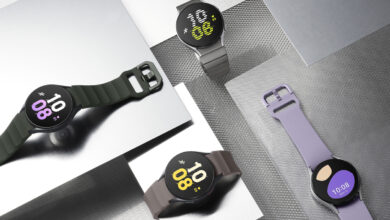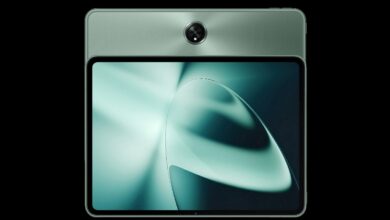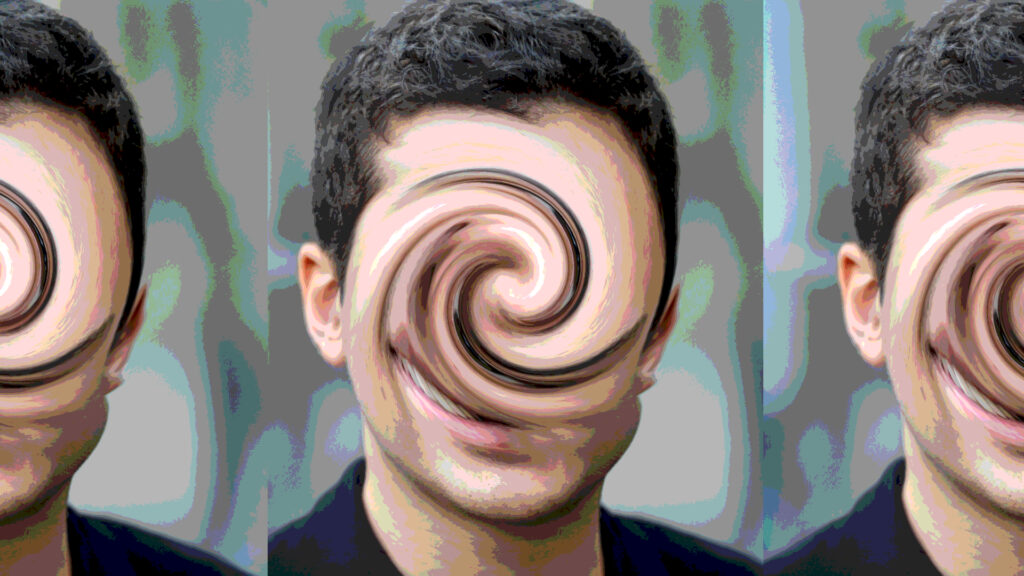
Neural networks make it possible to create very compelling photos of people who don’t exist. These images are so realistic that they are very difficult to distinguish from genuine portraits. But researchers have found a way to tell the real from the fake.
Artificial intelligences have been able, in recent years, to produce very realistic photos of people who do not exist. Nvidia researchers succeeded in 2017 in creating thousands of faces, thanks to neural networks. Since 2019, the site ThisPersonDoesNotExist also offers photos generated by artificial intelligence.
Very impressive, the technology can also be a little scary. CNN was reporting the case of Jenna Abrams, a supposed American conservative followed by nearly 70,000 people on Twitter, who was actually an account hosted by a Russian entity, linked to the government, and who was hiding behind a photo created by artificial intelligence. Last year, an investigation by the American media outlet The Daily Beast identified a network of fake journalists, who used photos generated by ThisPersonDoesNotExist to create a false identity. These bogus journalists had been rampant for almost a year, and had managed to get editorials in media outlets praising the United Arab Emirates.
Defects in the pupils
The question that arises in these situations is of course that of identification. Is it still possible for humans to be able to determine if it is a real person in the photo? If the exercise is complex, the answer is reassuring. Researchers at New York State University studied photos created by neural networks, and found that artificial intelligence still couldn’t reproduce pupils well. ” We found that the pupils of many of the AI-generated photos were irregularly shaped, and that they were different from those of real human beings. », Specify the researchers in their publication.
They say they analyzed a thousand photos generated by ThisPersonDoesNotExist, which they compared to 1,000 photos of real people. Thanks to several tools, the scientists were able to extract the shapes of the pupils of each photo, and create models. As a result, the pupils of humans are round, or elliptical in shape, while those in AI-generated photos very often suffer from flaws.

And it’s true: on images from ThisPersonDoesNotExist that Numerama analyzed, the defects on the pupils are quite easy to spot, once you know what you are looking for. In the example below, a simple zoom shows that the pupils are not completely round, and that they have defects.

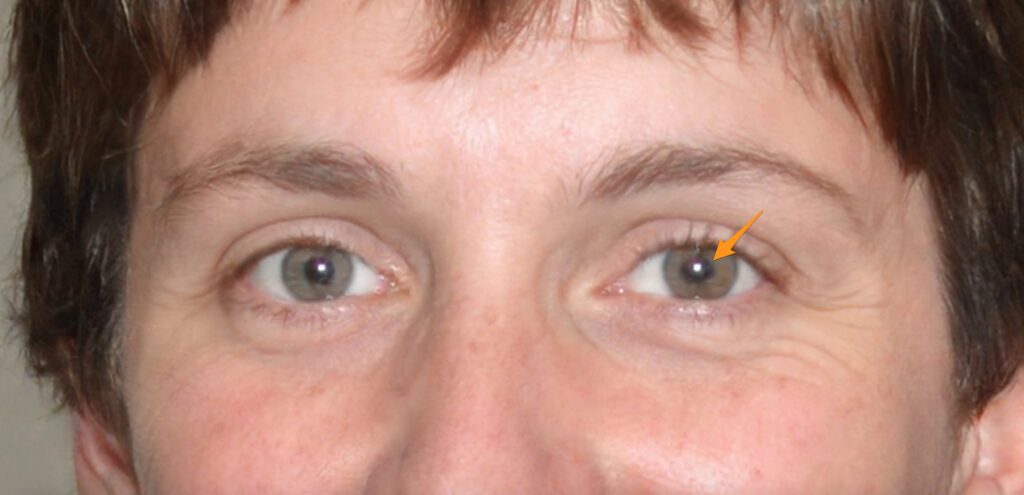
Of course, the researchers’ method has certain limitations. There are indeed rare diseases that cause deformation of the pupils. However, this remains exceptional cases. The researchers also note that these flaws are difficult to see in some AI-generated photos. But, overall, ” this method allows humans to quickly get an idea of the photo, and to know if it represents a real person “.
Position, teeth, and ears
What are these pupil defects due to? The researchers do not offer an answer for the moment. But they specify that they intend to continue their work on the subject. ” We are going to look at other types of defects that the photos generated by AI present, such as the inconsistencies between the two pupils of the same person, their position in the eyes, or their geometry. They write.
There are already other tips for successfully distinguishing photos created by AIs from real snapshots. Journalist Adam Rowsley, who wrote about AI-generated footage for The Daily Beast, says other things to watch out for such as ears and teeth.
Fake faces generated by AI are fairly convincing but they do glitch out on some things, like ears and teeth. They seem to have trouble with the ear creases, like Joe here. pic.twitter.com/nhS2RQHmR6
– Adam Rawnsley (@arawnsley) July 6, 2020
Other small details can alert: the hair is not cohesive, accessories such as earrings or collars appear strangely. If a person wears glasses, they are also likely to have defects, whether in the temples or in the lenses. In the example below, we can see that the chain is not well drawn, and that it seems to disappear before the edge of the photo.
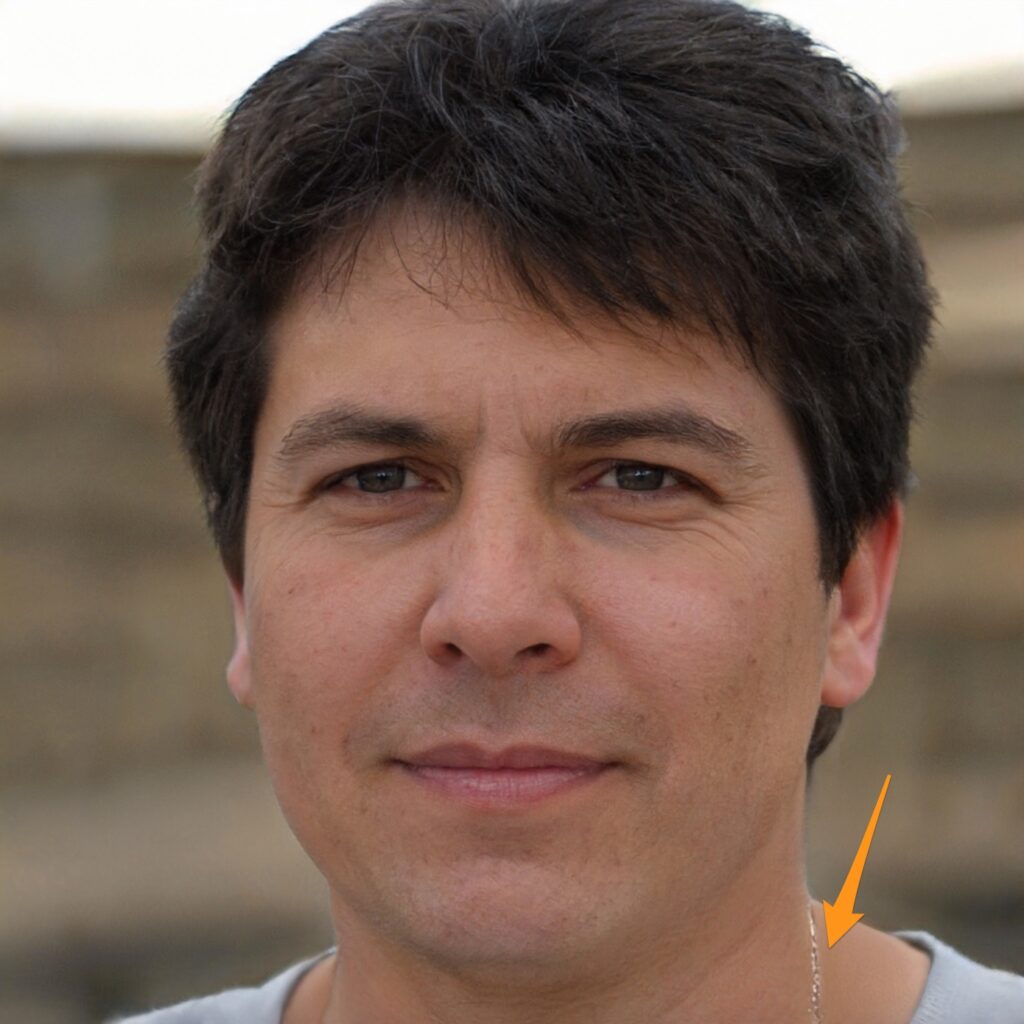
The background of the photos is generally blurry, or even completely abstract. There is also the position of the faces. They are, in the great majority of cases, full face or even slightly three quarters, and the position of the eyes is always the same, in all the photos. They are rarely seen from above, or from a low angle, and the faces are generally perfectly centered. These defects are unfortunately not very visible at first glance: most of the time you have to look at the photo carefully, zoom in, and above all, know what to look for.
